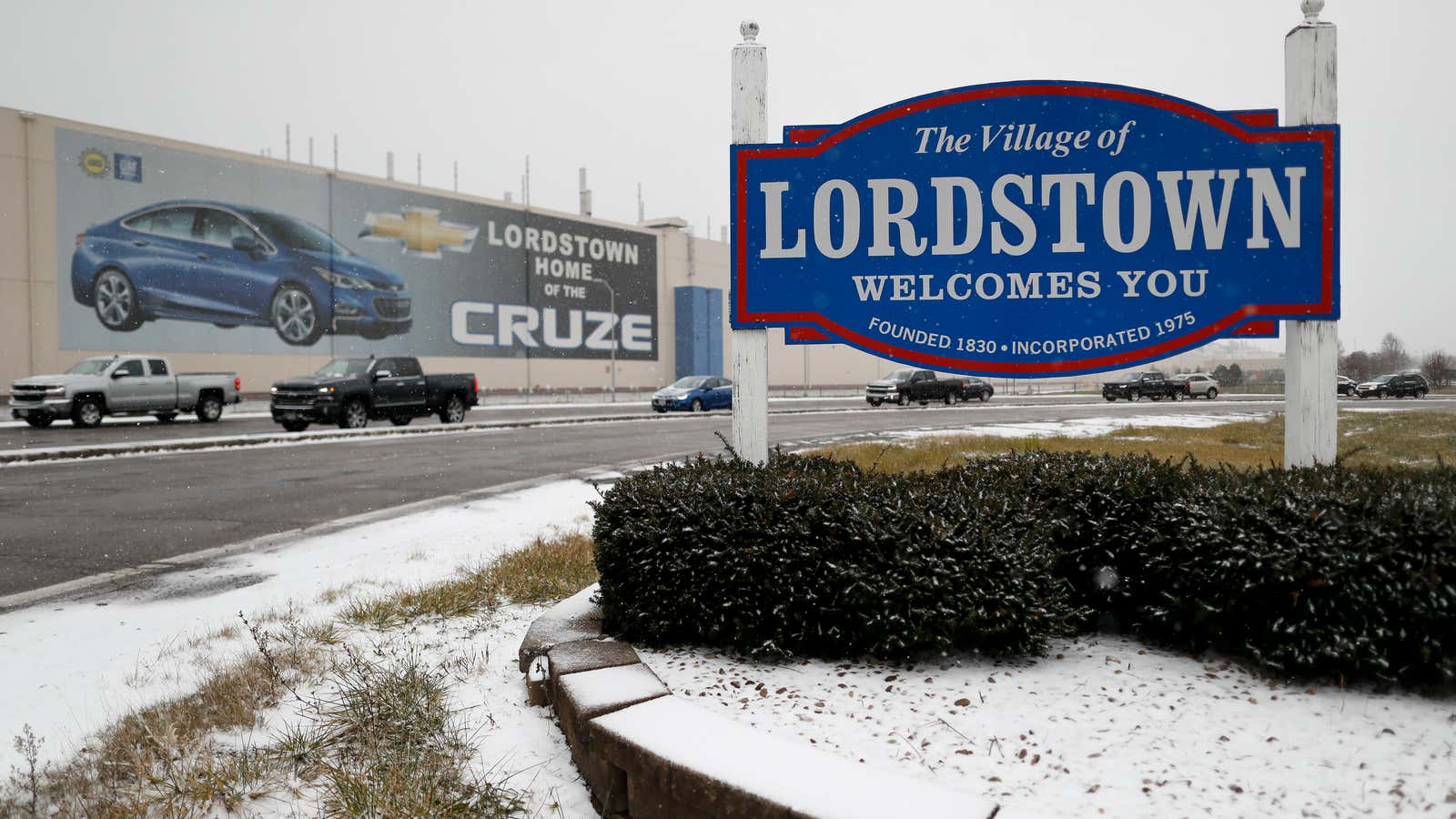GM’s decision to idle five plants in North America could mean around 11,300 US workers losing their jobs. However, an American brand retreating from US production won’t really hurt Americans’ ability to buy a US-made car. In our globalized economy, automobile origins are as international as their brands. You might own a “Japanese” Toyota, but it could be made in Kentucky. How can you tell? It’s called the Vehicle Identification Number or VIN.
Automobile manufacturers began stamping unique numbers on their products as early as the 1950s. The International Organization for Standardization described a system for VIN’s in 1977. The US Department of Transportation declared in 1980 that all vehicles adopt the seventeen-digit system by 1981. All sorts of information about a car are encoded in its VIN. For instance, a VIN is can be used to look up a car’s ownership history, to check if it has has curtain airbags, or if the steering wheel has been recalled. It can also be used to determine where the car was ultimately assembled.
International VIN decoder
VINs are typically printed on the inside of the windshield on the driver’s side and on the frame inside the driver’s door. To figure out the where a car is from, enter the first three characters of a VIN above. These digits are what’s known as the World Manufacturer Identifier.
No car today is made entirely in one country. The parts and assembly of ever-larger components happen along an international supply chain before a car rolls off a production line. Restrictive trade policies—while possibly aimed at a foreign automaker—might hurt a domestic brand more if the domestic brand assembles their cars abroad. For instance the “American” Lincoln MKZ is assembled in Mexico, “Japanese” Toyota assembles its Camry in the US. Tariffs hurt the US-headquartered owner of Lincoln, Ford, and protect the Japan-based Toyota.
